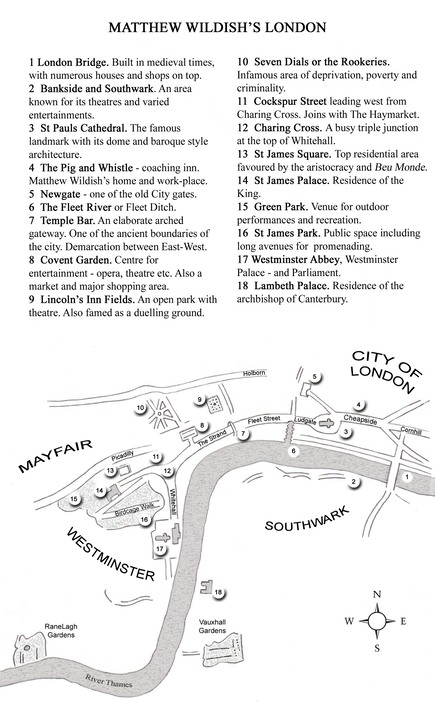EXTRACT from Chapter 12, The Rainbow
As is his custom, he locates one of the rare stretches of open balustrade and here, leaning back against some brickwork, sets himself to soaking up the sunshine. Is it possible to be in love with a city, he wonders as he gazes westward along the busy river? If the answer is yes, then there is surely no better candidate for a man’s affections than London - the buildings of Hawksmoor and Wren; the pleasure gardens of Vauxhall and Ranelagh; the theatres and fairs. Never silent, the very air itself is alive with all the varied and dissonant voices of its citizens – a cacophony of hawkers and traders, of street ballads and organ grinders, all mingled with the endless clatter of ironshod wheels on cobbled stones and the intermittent pealing of a hundred church bells filling the skies.
And then, by contrast, eastwards, down by the docks, the sounds are entirely different - an evocation of the not-too-distant sea, all the creaks and groans that attend the mechanics of perpetual commerce, and the cries of gulls circling above the jetties and wharves - all mingling with shanties sung on decks or the taunt flapping of canvas upon the yards of the anchored ships. How wonderful a combination of sounds - by day, a chorus of celebration; by night, a whisper and a sigh of pleasure - and whenever he must journey away from it for any length of time it would be as if his very heart were weeping for its absence and urging him to return.


